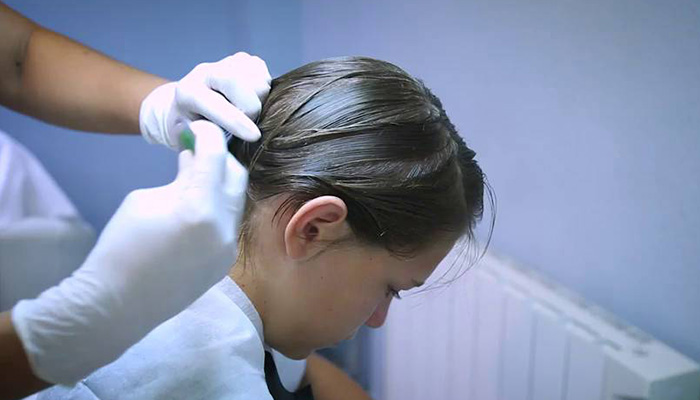Head lice are a frequent topic that triage nurses at South Lake Pediatrics get called about. Head lice are a common problem for children in the childcare and school setting. Luckily lice can be treated at home. With careful treatment, lice and nits (lice eggs) can be killed.
What do head lice look like?
Head lice are tiny, gray bugs that live in the hair and on the scalp. They are 2 to 3 millimeters (1/8 inch) long. They move fast and can be hard to see. They attach their white eggs, called nits, to the hair. Unlike dandruff, nits can’t be shaken off. The nits are easier to see than the lice because they are white, there are a lot of them, and they don’t move. Nits are about the size of the eye of a small needle. They normally hatch into lice in about 1 week.
What symptoms will my child have?
Kids with lice will usually have itching of the head and neck. There are a few things you can look for when checking for lice on your child. You can find crawling lice in the hair although they can be few in number. You may find eggs (nits) glued to the hair. They are often found behind the ears and at the back of the neck. Also check for scratch marks on the head or back of the neck at the hairline.
How does my child get head lice?
Head lice only live on human beings. They can be spread quickly by being in close contact with, or using the hat, comb, or brush of a person who has head lice. Anyone can get lice despite good health habits and frequent hair washing. Lice cannot fly or jump. They are only passed by direct contact.
How do I treat head lice?
There are several anti-lice shampoos available over the counter. One brand we recommend is Nix. Nix is safe to use above 2-months-old. Nix can be used as follows:
- First, wash the hair with a regular shampoo and towel it dry before using the anti-lice cream. Do not use a conditioner after shampooing as it can interfere with Nix.
- Pour 2 ounces (full bottle) of Nix into damp hair. People with long hair may need to use 2 bottles. Work the cream into all the hair down to the roots. If necessary, add a little warm water to work up lather. Leave the shampoo on for a full 10 minutes to help kill all of the lice.
- Rinse the hair thoroughly with water and dry it with a towel.
- Repeat the anti-lice shampoo in 9 days to kill any lice that have hatched since the first treatment. With these two treatments, all lice and nits should be killed. Lice do not carry other diseases and there should not be any residual problems after treatment.
Do I need to remove the nits?
Nit removal is not necessary. Only live lice can cause lice in other children. It should not interfere with the return to school. The American Academy of Pediatrics and the National Association of School Nurses recommend that all no-nit policies in schools be abandoned.
How do I clean my home?
Head lice can’t live for more than 24 hours off the human body. Nits can live for 2 weeks. Vacuum your child’s room. Soak combs and brushes for 1 hour in a solution made from the anti-lice shampoo. Wash your child’s sheets, blankets, and pillowcases in hot water (130 F kills lice and nits). Items that can’t be washed (hats or coats) can be sealed in plastic bags for 2 weeks until the nits are dead.
When do I call the clinic?
Call us if rashes or itching is not gone one week after treatment. If there are sores present that start to spread or look infected you should be seen. There are lice that have become resistant to some of our treatments so if the lice and nits don’t go away (or return), or there are other questions or concerns, please contact us.
Resources:
Hennepin County Infectious Diseases
https://www.hennepin.us/residents/health-medical/infectious-diseases#Sec6
Children’s Health Network
http://www.childrenshealthnetwork.org/CRS-clinics/CRS/pa_licehead_hhg.htm

Leave a Reply